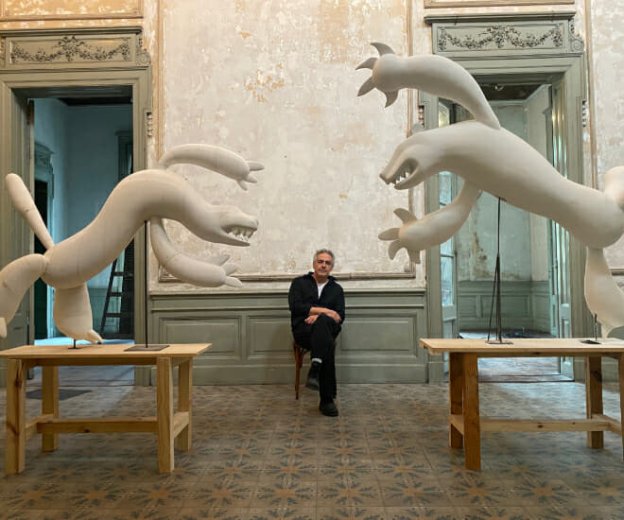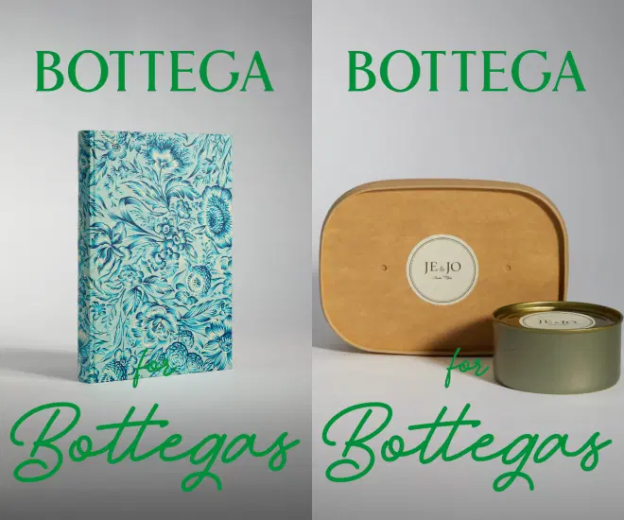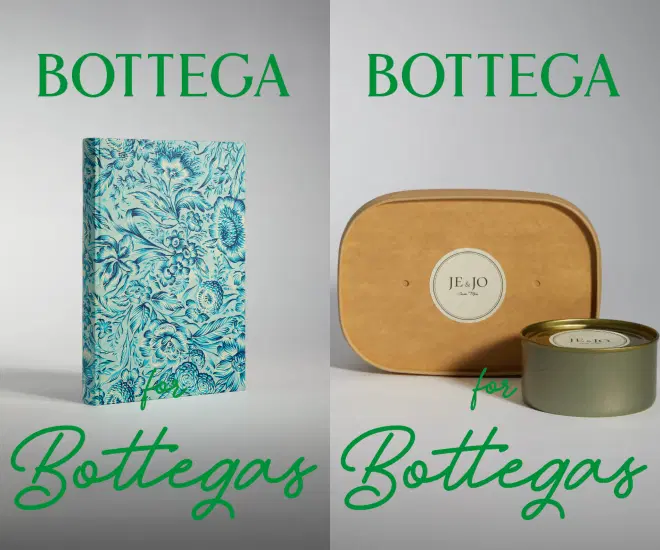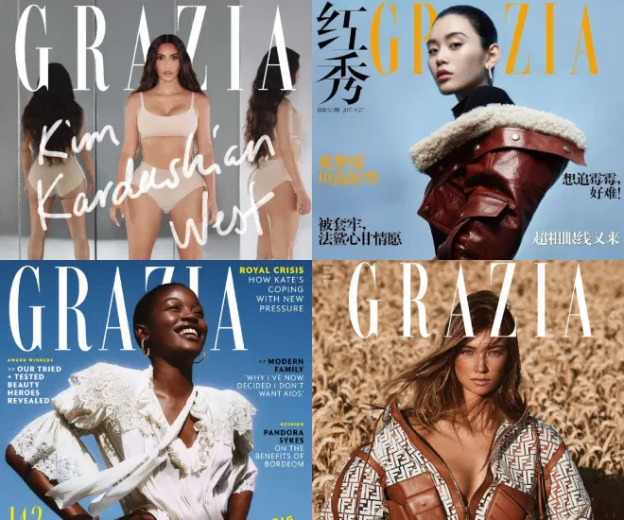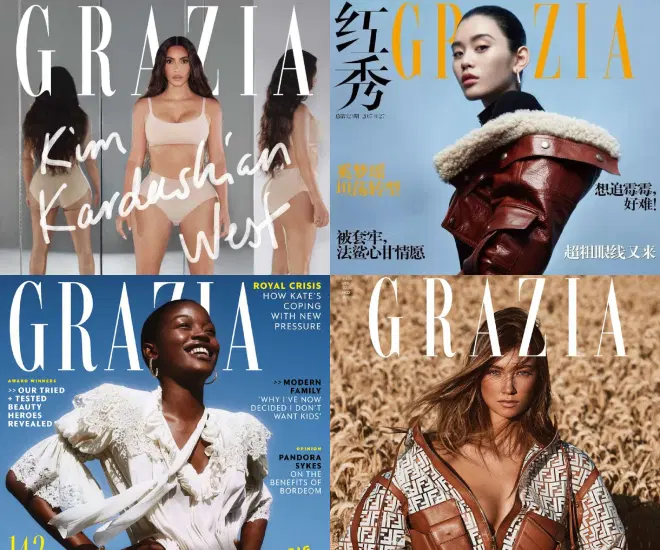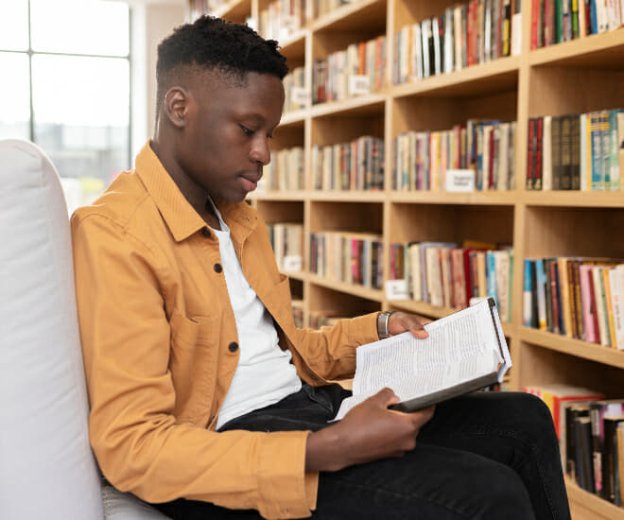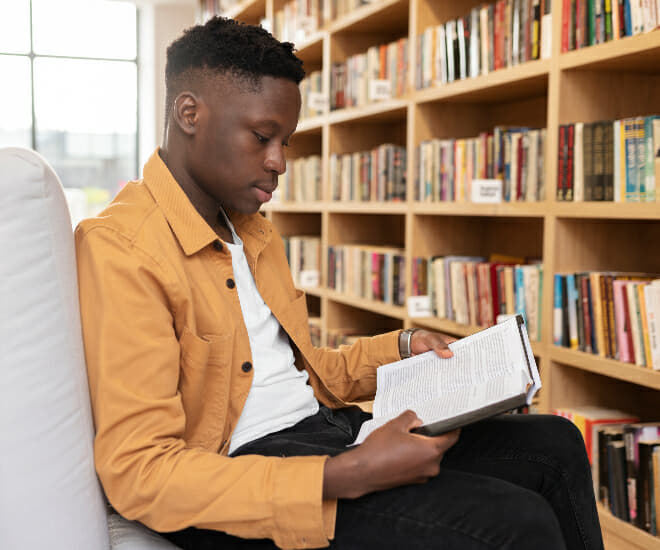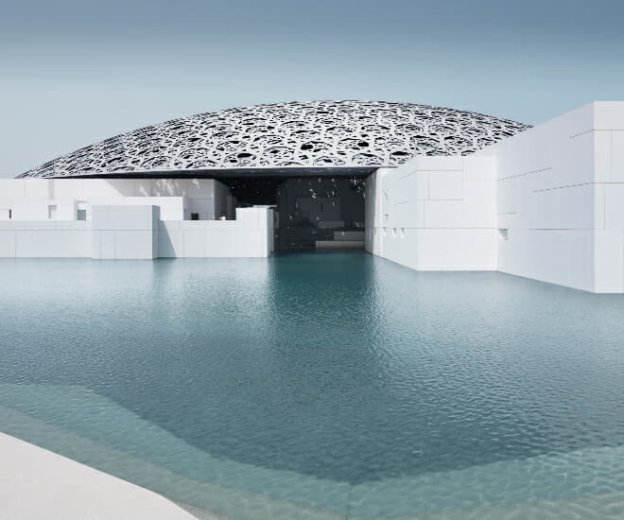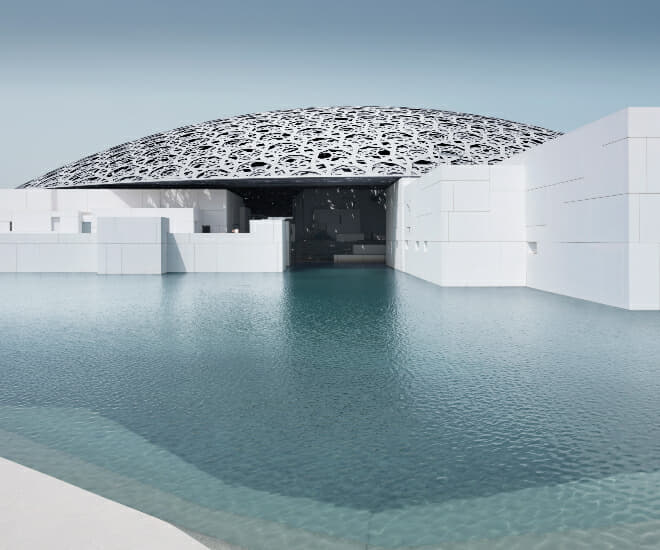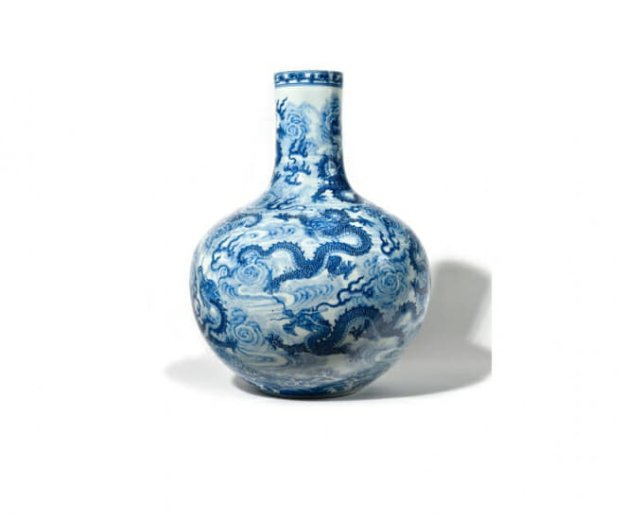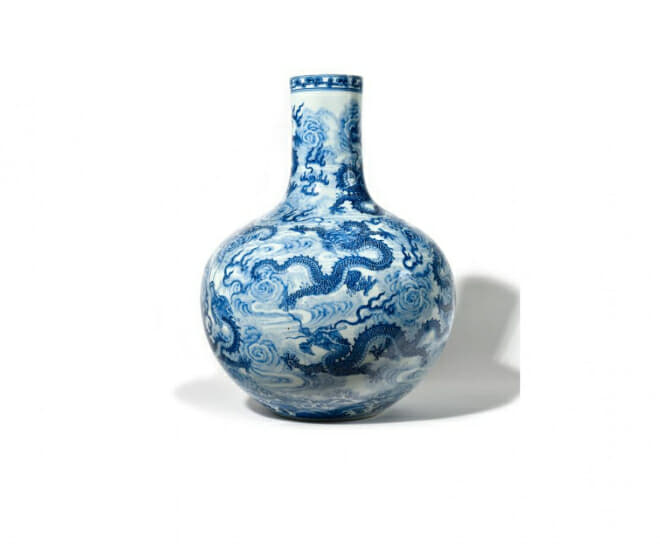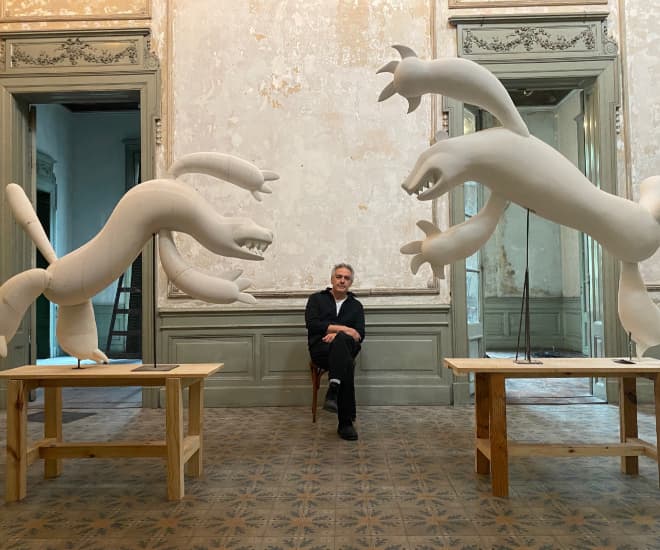
Argentinian artist Marcelo Martin Burgos now lives and works between Buenos Aires and Madrid. He has been practising sculpture for some thirty years, while also pursuing a career as a filmmaker. He finds his equilibrium through this alternation between immobility and movement, solitary work and teamwork, gesture and speech.
His artistic world is deeply rooted in childhood. The artist spent his early years in an orphanage where his father was the director and he was in contact with the children who lived there, who were also his friends. He remembers: “The place was on a hill, surrounded by trees but far from idyllic; it was eternally overcast by a heavy atmosphere of sadness. I’ve always remembered those kids with admiration. The way they would seek refuge in fantasy. The same way I found solace in art when just a few years later I lost my own father. Those children were the most resilient and brave of all the people I have met in my life.” Marcelo Martin Burgos continues to be fascinated by the imagination of children, which “helps them to make sense of the enormous, mysterious and overwhelming world they are thrown into.”
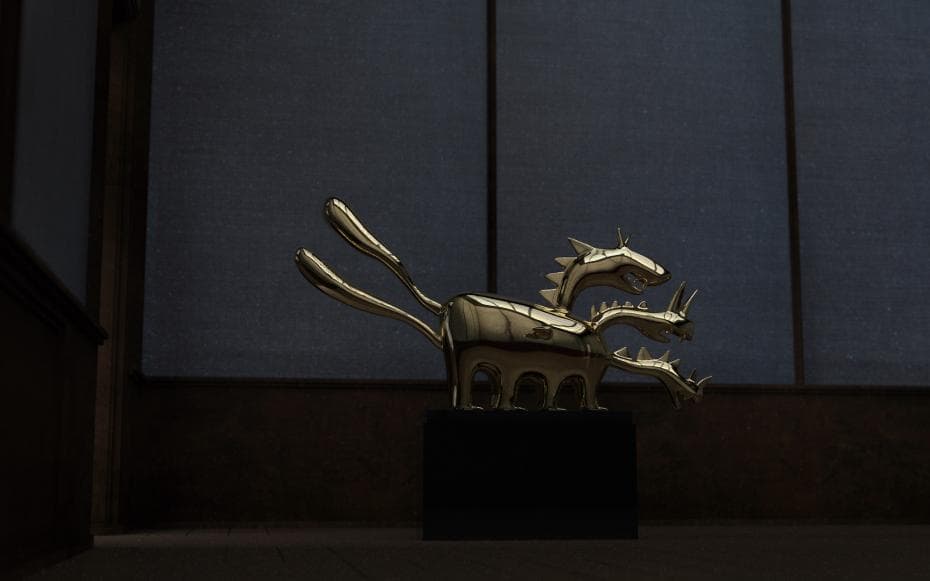
- READ MORE: Romain Langlois: Artist and Alchemist
To rekindle the power of that imagination and to recapture the joy and freedom he felt in creating as a child, the artist has spent years shedding the academic baggage he received as an art student. A path which is not as easy as it seems: “it takes years to “unlearn” an education in the Fine Arts. The hand and the eyes are trained in a certain tradition, we are taught art history, we learn to imitate. Even worse, we are taught art is a struggle, and that to be a good artist means to cut an ear or drink oneself to death. I spent years trying to be a “serious” artist, I grew tired and bored. Until one day I stumbled upon some chalk drawings a kid had made on the floor of a park, and it struck me. Like a Proust’s Madelaine moment, I went back to the years I would draw just to amuse myself or to escape a reality that was too difficult to comprehend for a child. I had a voice, but for years I was trained to ignore it, to dismiss it.”
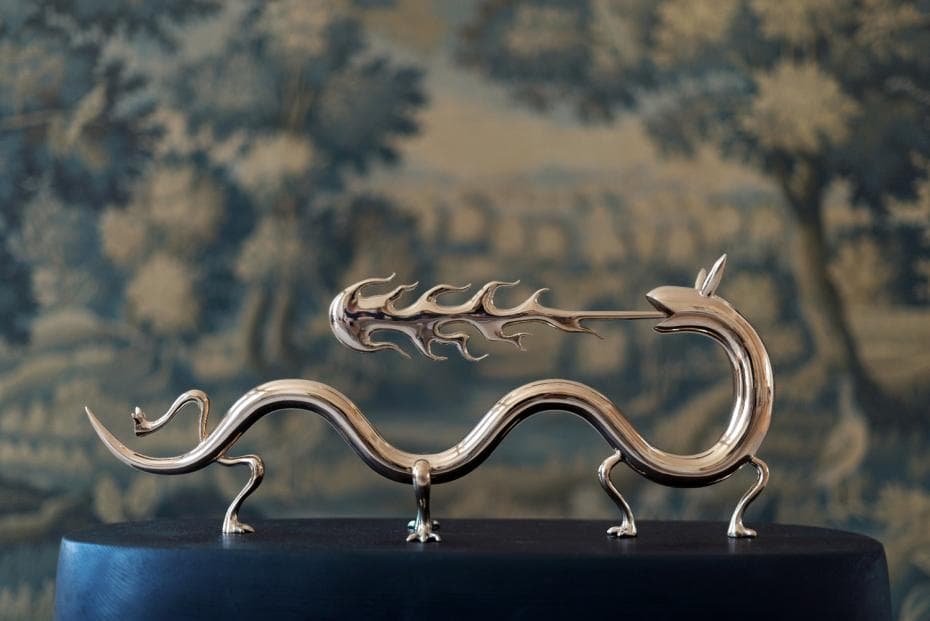
His sculptures are crafted in bronze, a noble metal that he values for its versatility and above all, for its golden, mirror-like appearance once it is polished. Long before the invention of glass, the Etruscans were already using polished bronze to create mirrors. The reflective aspect of his creations is a way of inviting his viewers into his works and transforming his sculptures into sensory cues that trigger a memory. “My aim is to elicit images and feelings that will take those who observe my art back to the most creative, awe-inspiring, and frightening time of their lives: the golden age of childhood.”
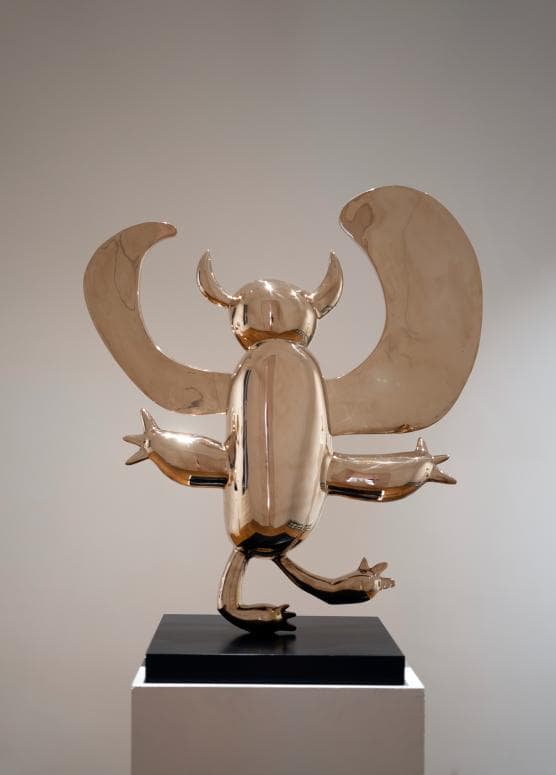
- READ MORE: The Extravagant Minimalism of Tom Price
This “golden age” is interpreted literally in his sculptures, which resemble statuettes in gold, a material traditionally associated with spirituality and the sacred. This dimension is particularly evident in his latest series, entitled “Monsters.” Although they evoke the spontaneity of children’s drawings, the pieces in this series are also reminiscent of the votive statues of ancient civilisations, which were meant to provide protection and comfort. The art of Marcelo Martin Burgos draws from multiple sources: manga and pop culture, dinosaurs, Toltec and African art. This power of evocation is precisely what gives his sculptures their capacity to resonate in everyone who views them: the sculptures become the means of escape into the memories, the dreams and the meanderings of our inner world.
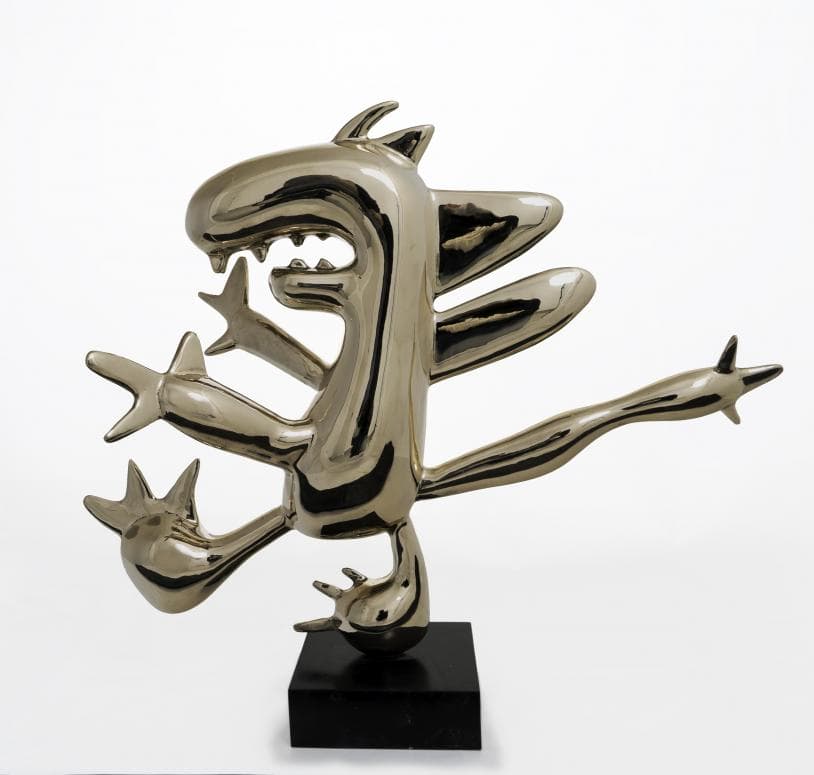
Marcelo Martin Burgos does not worry about the common critique expressed by viewers of contemporary art: “A kid could have done that”. “I would like them to know that that is the greatest compliment that you could ever give an artist, especially me”.
Marcelo Martin Burgos is represented by Artistics contemporary art gallery in Paris.
For more art reads, click here.
